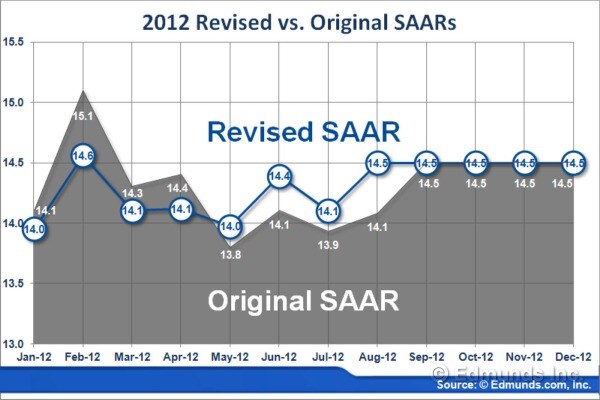Edmunds.com Analysts Disappoint Conspiracy Theorists
As the election enters its final phase the auto industry continues to be a focal point for both parties. Of particular interest is the government managed bankruptcies and financial bailouts of both GM and Chrysler.
On one side are the Republicans claiming the bailout was a bad idea in general and payback to union supporters in particular. These arguments look a bit out of touch when stacked against a newly resurgent GM and Chrysler.
On the other side are the Democrats looking to take full credit for this happy state of affairs. Viewed more objectively, at some point this is a bit like the rooster taking credit for the dawn. After all, the auto industry is much bigger than just GM and Chrysler. Pretty much every car company is enjoying a profit rebound. Looking over the span of history, the auto industry typically leads the country out of recession. If anything, this rebound is notable for its tepidness.
Against this backdrop, there was an article in the Detroit News Tuesday that covered August sales The later section notes the recent change in the Seasonally Adjusted Annual Rate formula issued by the Bureau of Economic Analysts. The SAAR formula is used to adjust car monthly sales results for practical comparisons and other research purposes. The writer of the article wondered if this change was designed to enhance the administration's claims by suggesting that auto sales might be a bit healthier than would have otherwise been reported.
I am always a bit skeptical of conspiracies. They usually require a level of coordination and secrecy we rarely see in any human endeavor. But let's look at this one a bit more fully.
First, in the "no conspiracy" camp is the fact this formula is adjusted every year. This year was no exception. The second is that it is an adjustment that attempts to smooth our seasonal "lumpiness" in sales. In other words, if the market was stable, you would expect the monthly SAAR number to be essentially flat as well. But SAAR is a monthly number. At the end of the year, the sales numbers are what they are. (I always cringe when someone talks about the annual SAAR.) This means that if the adjustment nudges the SAAR a bit higher one month, the SAAR must be nudged lower the next to compensate.
Here's where the conspiracy theorists jump in. The new formula did in fact lower the reported SAAR for January through April of this year. August sales under the older SAAR formula would have been reported as 14.1m sales, but the new formula reports sales as 14.5m SAAR. But if there is really a conspiracy to hype auto sales numbers, the months that really matter are September, October and November. Was the SAAR formula adjusted to favor these months? This is not the easiest comparison to make as there is no "official" old SAAR formula for these months. Fortunately, Edmunds.com analysts have tackled much tougher challenges. Here's our comparison:

For this analysis, we assumed that the market stays flat through November. As you can see, the old/new formula variation for September through November is basically nil. Netting things out, if there was a conspiracy, it was pointless.















